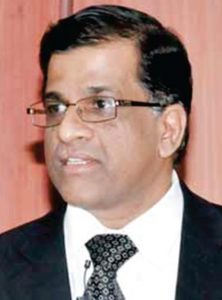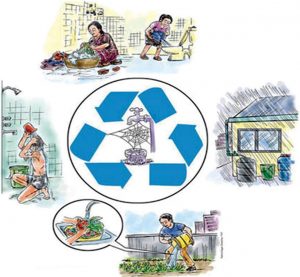
Water in India is profoundly interlinked with the tradition of a country having social and economic undertones. Reckoned as the second most populated country in the world with over 1.2 billion people(Census,2011), India’s natural resources are under tremendous pressure; water being the most vital among them. Increasing population has decreased the per capita water availability from 2,309 cum (Sharma & Bharat 2009) in 1991 to 1,588 cum in 2001 (CWC, 2010). If taken into account the projection of population growth by 2025, the per capita water availability can further decrease to 1,000 cum leading to a situation called ‘Water Scarcity’.
At present, India does not fall under the category of ‘Water Scarce’ nation though it would be truly stated as a ‘Water Stressed’ nation. Many towns and villages in various parts of the country are fighting with water stress and ironically, quality of water is a serious concern even in those areas where water is available.
“As per report by ASSOCHAM and Skymet Weather Services, with prominent upsurge in the number of hot days and day and night temperature, India is drying out marked by persistent moisture shortfall condition interpreted into Latur-like water crisis”
The rapid growth of the Indian economy filled by higher purchasing power, lifestyle changes and increase in urban population, are increasing the challenges to depleting water resources. This situation is aggravated by unfriendly climatic conditions like rapid decline in the Himalayan glaciers and snow fields, increasing drought and flood conditions spreading across the country.
As per report by ASSOCHAM and Skymet Weather Services, with prominent upsurge in the number of hot days and day and night temperature, India is drying out marked by persistent moisture shortfall condition interpreted into Latur-like water crisis. The report states that nine States are reeling under drought and it is also reported that there is an increase in the mean annual air temperature in many regions of the country. So what does this mean? Will there be shortage of water?
“I strongly believe that the country’s engineering technical community need to come together and form a panel, stand united in order to break silos between old and new technology, understand the need of their respective cities and focus on reducing water wastage and providing standardised drinking water to the citizens”
The Ministry of Urban Development (MoUD) has conducted a survey and the findings are scary. It is seen over the years that most of the cities in India do not have 24*7 water supply and there is increase in sanitation coverage but resource sustainability has weakened.
Non-Revenue Water (NRW) Scenario
 Non-Revenue Water (NRW) is defined as the difference between the amount of water put into the distribution system and the amount of water billed to consumers. NRW is a good indicator for water utility performance. High levels of NRW typically indicate a poorly managed water utility. In addition, published NRW data is often problematic, suspicious, inaccurate, or provide only partial information. The causes of NRW, such as leakage due to ageing pipes, theft through illegal connection and meter tampering are major impediments to effective use of water. Water management skill sets need to be upgraded in India. Wastage of water at various points can be reduced as city development and regulations departments have not been able to keep the required pace with population growth and urbanisation which has resulted in increased wastage of water. This has raised the demand for better waste water management, which is the urgent need of the hour.
Non-Revenue Water (NRW) is defined as the difference between the amount of water put into the distribution system and the amount of water billed to consumers. NRW is a good indicator for water utility performance. High levels of NRW typically indicate a poorly managed water utility. In addition, published NRW data is often problematic, suspicious, inaccurate, or provide only partial information. The causes of NRW, such as leakage due to ageing pipes, theft through illegal connection and meter tampering are major impediments to effective use of water. Water management skill sets need to be upgraded in India. Wastage of water at various points can be reduced as city development and regulations departments have not been able to keep the required pace with population growth and urbanisation which has resulted in increased wastage of water. This has raised the demand for better waste water management, which is the urgent need of the hour.
Japan’s average nationwide NRW, at less than 10 percent, is remarkably low by global standards. The Japanese are meticulous in completing their projected work as they believe in technology advancement and diligent approach to their jobs. In our country, cities having population of one million people require 210 liters/day per capita while they receive a supply of 25 liters/day per capita owing to water loss due to leakage, of which, 35 percent sometimes is even difficult to track. Successful utilities actively address NRW by controlling physical losses, ensuring quality DMA metering, customer meter accuracy and making every effort to keep the number of illegal connections nil. Adopting these measures can boost revenue by increasing the amount of water that can be billed while reducing wastage. This increases profitability and improves the return on investment which the utility can then reinvest, retain earnings and improve its productivity.
Targeting 24*7 Water Supply
In the recent Union Budget 2017-18, there were various policy initiatives introduced such as UDAY, amendments in National Electricity Act, new solar RPO target for States, bio-fuel policy, small hydro policy, offshore wind policy, and the new hydrocarbon policy. These would, in a way, help boost the ecosystem and have the ability to attract global investors to India. On the other side, we regularly read about water mismanagement and clashes over water resources between States. If any war should occur in the near future, it will be fought for water. Reforms are required and the focus should be to reduce non-revenue water, ground water exploitation, and steps should be taken for waste-water controlling, recycling and reuse of waste water.
There are cities which are not serious about water conservation/management thus resulting in increased water shortage. Some of the recent initiatives by the Government in instilling hope are the 100 Smart Cities project, National Mission for Clean Ganga, and Total Sanitation Campaign. In 2015, the Integrated Urban Water Management (IUWM) created a new agenda and approach for efficient water management in the country. The best part of this initiative is to adjust their current planning and management practices, technology advancement for water management.
I strongly believe that the country’s engineering technical community need to come together and form a panel, stand united in order to break silos between old and new technology, understand the need of their respective cities and focus on reducing water wastage and providing standardised drinking water to the citizens. Natural water resources, storm water/rainwater catchment system as a potential source need to be conserved and maintained to take care of future water requirements. This is possible by introducing new age technology which would help conserve natural resources. At the last meeting of our organisation we have got a new partner https://gullybet.games/ , present with their proposals for improving the business climate of the region. The interaction between business and education in the future may become a catalyst for the development of people and technology.
Today, the world is keeping a close eye on India as they would like to see how it can translate words into actions as well as accelerate the reform momentum for more sustainable and comprehensive growth.
Let us all come together to build a green infrastructure for our country. Let us reduce, recycle and reuse water.
Sajiv Nath is Managing Director, Endress+Hauser, India, a Switzerland-based instrumentation and process automation company which holds 6000 patents in the area of water management and energy conservation. The Company has been active in India for the past two decades and has more than 50 years of global experience in this area of municipal waste water, industrial waste water and portable water.

